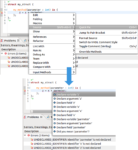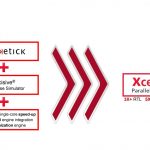As multi-die and chiplet-based system designs become more prevalent in advanced electronics, much of the focus has been on physical design challenges. However, verification—particularly functional correctness and interoperability of inter-die connections—is just as critical. Interfaces such as UCIe or custom interconnects… Read More
Tag: xcelium
Cadence and AI at #60DAC
Paul Cunningham from Cadence presented at the #60DAC Pavilion and gave one of the most optimistic visions of AI applied to EDA that I’ve witnessed, so hopefully I can convey some of his enthusiasm and outright excitement in my blog report. Mr. Cunningham reviewed the various ages of EDA design with each era providing about… Read More
Machine Learning Applications in Simulation
Machine learning (ML) is finding its way into many of the tools in silicon design flows, to shorten run times and improve the quality of results. Logic simulation seemed an obvious target for ML, though resisted apparent benefits for a while. I suspect this was because we all assumed the obvious application should be to use ML to refine… Read More
Don’t You Forget About “e”
I imagine that the title of this post will remind many of 80s synth-pop, or perhaps the movie The Breakfast Club. But my topic is the venerable hardware verification language (HVL) known simply as e. It has quite an interesting history and it played a key role in the development of the modern testbench methodology that most chip verification… Read More
Cadence Increases Verification Efficiency up to 5X with Xcelium ML
SoC verification has always been an interesting topic for me. Having worked at companies like Zycad that offered hardware accelerators for logic and fault simulation, the concept of reducing the time needed to verify a complex SoC has occupied a lot of my thoughts. The bar we always tried to clear was actually simple to articulate… Read More
Simulation and Formal – Finding the Right Balance
Simulation dominates hardware functional verification today and likely will continue to dominate for the foreseeable future. Meanwhile formal verification, once thought to be a possible challenger for the title, has instead converged on a more effective role as a complement to simulation. Formal excels at finding problems… Read More
Anirudh on Verification
I was fortunate to have a 1-on-1 with Anirudh before he delivered the keynote at DVCon. In case you don’t know the name, Dr. Anirudh Devgan is Executive VP and GM of the Digital & Signoff Group and the System & Verification Group at Cadence. He’s on a meteoric rise in the company, not least for what he has done for Cadence’s position… Read More
Simulation done Faster
When it comes to functional verification of large designs, huge progress is being made in emulation and FPGA-based prototyping (about which I’ll have more to say in follow-on blogs), but simulation still dominates verification activity, all the way from IP verification to gate-level signoff. For many, while it is much slower… Read More









